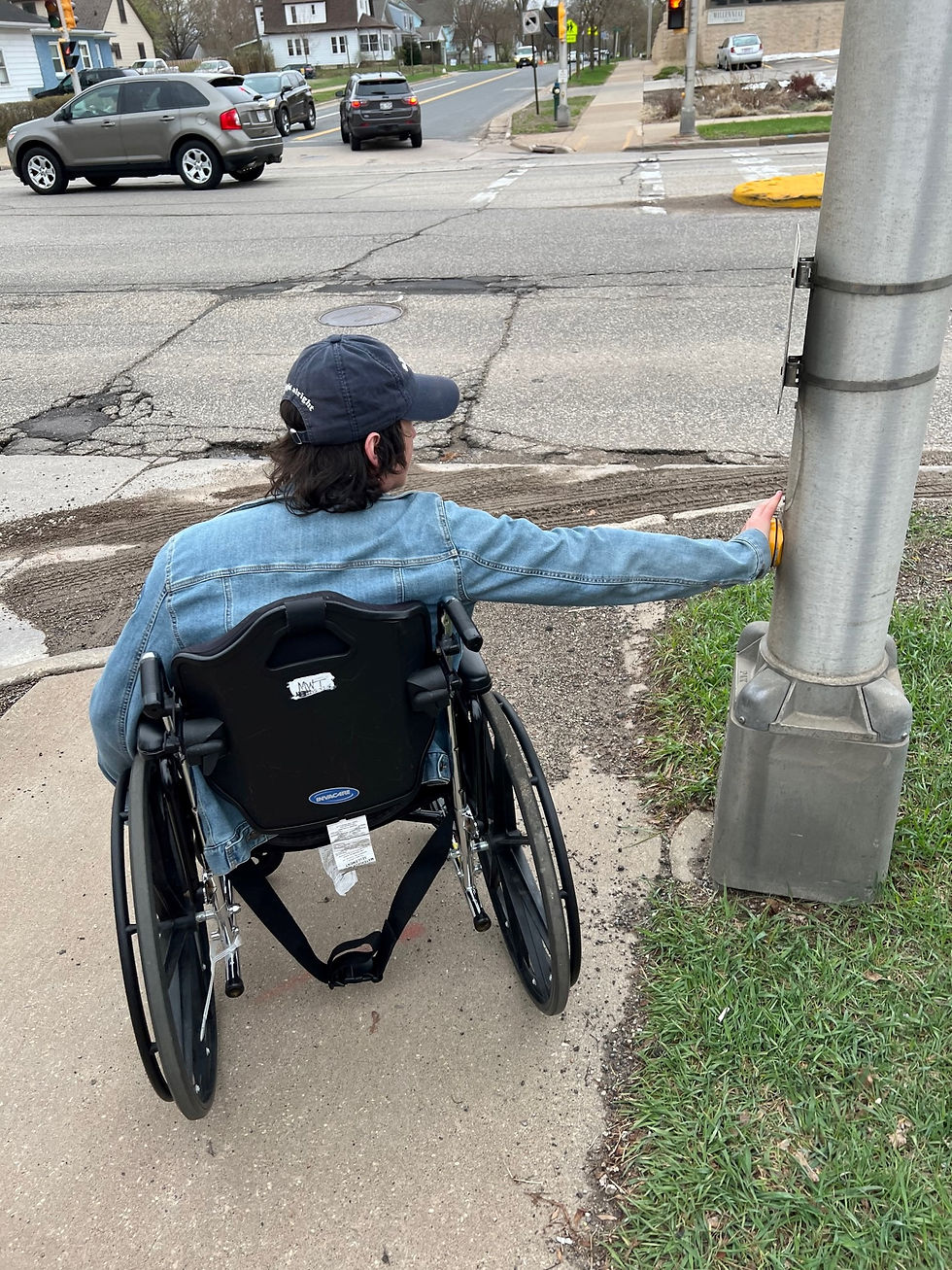Community Transportation Academy Update: walk with me!
- susan462
- Apr 25, 2023
- 3 min read
It’s hard to believe that the Community Transportation Academy in La Crosse wraps up this week!
The penultimate class session was a walk/roll audit, which was a welcome opportunity for everyone to meet in person (Zoom fatigue is real!) and apply what we have covered in class to a local situation. We conducted the walk/roll audit on a section of Losey Boulevard, which runs north-south through La Crosse and borders the east side of the UW La Crosse campus. Losey was frequently cited during class discussions as a dangerous road for pedestrians, and its proximity to the Student Union, where in-person sessions of the Academy are held, made it an excellent candidate for an audit.
Video by Larry Sleznikow, La Crosse
We used the Walk Audit Tool Kit, a free resource published by AARP. The Tool Kit is a user-friendly guide to assessing the safety and walkability of local streets. A set of worksheets accompany the guide, and they provide checklists for an assortment of situations: sidewalks, intersections, transit stops, street beautification, and more.
The class was divided into two groups in order to cover the section of Losey between La Crosse Street and Cass Street.

Image: Losey Blvd highlighted in yellow on a map
We began at the Student Union. The first group walked a loop from the union, headed east to Losey, north to La Crosse Street, then west on La Crosse street before returning to the Student Union.

The second group intended to walk straight east to Losey and turn south and go all the way to Cass Street before turning around and coming back.

Both groups ran into construction that had blocked pedestrian routes.
Images: construction along or near Losey Blvd. Photos by Susan Gaeddert, Erin Duffer, and Larry Sleznikow.
One member of the class works at a senior center and was able to borrow two wheelchairs to use for the audit. While no one in the class uses a wheelchair, having them available provided valuable perspective for those of us who might otherwise not have noticed details like uneven sidewalks and limited time at pedestrian crossings.

Image: a class participant prepares to cross the street using a wheelchair. Photo by Erin Duffer.
Below is a video of one member of the class negotiating a section of uneven sidewalk using a wheelchair.
Video by Erin Duffer, La Crosse.
Losey Blvd isn’t the worst example of a dangerous street, but nontheless it has several notable safety issues. Losey is under the jurisdiction of the City of La Crosse (as opposed to being a state highway) and is a major thoroughfare through the city. First, while the posted speed limit is 25mph, virtually every vehicle travels at least 40-45mph.There are sidewalks running along both sides of the street, but some were blocked for construction (as noted above) with no marked detours. Class members noted several problems with pedestrian crossings; “needs paint,” “hard to reach crossing button,” “no audible signal for visually impaired,” ”cluttered with debris,” “fallen branches,” and “narrow median” were just a few of the notes jotted down on the worksheets. One person simply wrote, “This is ridiculous.”
Indeed, some of what we encountered did feel ridiculous! One example is the intersection of Losey and King, where there is no signal or painted crosswalk and vehicles whiz by at 45mph, despite the pedestrian signs and the presence of a school (Blessed Sacrament).

Image: mixed messages mark the intersection of Losey and King, where curb cuts lead to an open street with no signal or painted crosswalk, and vehicles speed by at 45mph. Photo by Erin Duffer.
The final session of the Community Transportation Academy in La Crosse meets on Wednesday, April 26 at the UWL Student Union. Six participants or pairs of participants will present a final project in which they describe a local transportation problem and propose one or more solutions based on what they have learned during the class. Some local city staff and council members have been invited to attend and hear the presentations and offer questions and a response. Topics include proposals for new bike paths and bike parking, addressing climate change through local action, and improving safety on more local roadways.











Comments